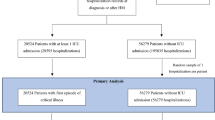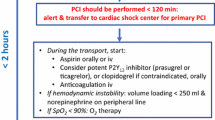Abstract
Background
Currently, guidelines do not recommend any standard approach for treatment of pulmonary thromboembolism (PTE) at outpatient setting. We investigated the efficacy and safety of a 90-day anticoagulant treatment of outpatients diagnosed with PTE who had negative troponin levels and low-risk simplified pulmonary embolism severity index (sPESI) at presentation.
Methods
This prospective cohort study included a total of 206 patients with objectively confirmed acute symptomatic PTE. Any troponin negative (cTn−) and low sPESI patients (as classified Group-1) were treated in outpatient setting. The primary endpoint was all-cause mortality during the first 90 days, and the secondary endpoint included non-fatal symptomatic recurrent PTE or non-fatal major bleeding. Presence of cancer was excluded from sPESI score.
Results
Fifty-two of 206 patients were eligible for had Group-1, and 31 were treated at outpatients settings. The 90-day all-cause mortality rate was 3.2 % among patients who received outpatient treatment. Otherwise cTn+ and high-risk sPESI 90-day mortality rate was 43.7 %. No difference was found in terms of secondary endpoints between the patients who received outpatient treatment and those who received inpatient treatment in Group-1 (p = NS). In our study, cancer was present in 16 (51.6 %) of the 31 outpatients.
Conclusion
We observed that patients with acute PTE, low-risk sPESI, and negative troponin levels can be safely treated in the outpatient settings. Also the presence of cancer alone does not necessitate hospitalization.

Similar content being viewed by others
References
Mos ICM, Creemers-Schild D, Hoogerbrugge ADM et al (2011) Outpatient treatment in patients with acute pulmonary embolism: the Hestia Study. J Thromb Haemost 9(8):8p. doi:10.1111/j.1538-7836.2011.04388.x
Aujesky D, Roy PM, Verschuren F et al (2011) Outpatient versus inpatient treatment for patients with acute pulmonary embolism: an international, open-label, randomised, non-inferiority trial. Lancet 378(9785):41–48. doi:10.1016/S0140-6736(11)60824-6
Ozsu S, Abul Y, Orem A et al (2013) Predictive value of troponins and simplified pulmonary embolism severity index in patients with normotensive pulmonary embolism. Multidiscip Respir Med 8(1):34. doi:10.1186/2049-6958-8-34
Lankeit M, Gomez V, Wagner C et al (2012) A strategy combining imaging and laboratory biomarkers in comparison with a simplified clinical score for risk stratification of patients with acute pulmonary embolism. Chest 141(4):916–922. doi:10.1378/chest.11-1355
Ozsu S, Karaman K, Mentese A et al (2010) Combined risk stratification with computerized tomography/echocardiography and biomarkers in patients with normotensive pulmonary embolism. Thromb Res 126(6):486–492
Konstantinides S, Geibel A, Olschewski M et al (1997) Association between thrombolytic treatment and the prognosis of hemodynamically stable patients with major pulmonary embolism: results of a multicenter registry. Circulation 96(3):882–888
Agterof MJ, van Bladel ER, Schutgens RE et al (2009) Risk stratification of patients with pulmonary embolism based on pulse rate and D-dimer concentration. Thromb Haemost 102(4):683–687. doi:10.1160/TH09-04-0229
Stein PD, Janjua M, Matta F et al (2011) Prognostic value of D-dimer in stable patients with pulmonary embolism. Clin Appl Thromb Hemost 17(6):E183–185. doi:10.1177/1076029610395129
Kohn CG, Mearns EL, Parker MW et al (2014) Prognostic accuracy of clinical prediction rules for early post-pulmonary embolism all-cause mortality: a bivariate meta-analysis. Chest. doi:10.1378/chest.14-1888
Zondag W, Hiddinga BI, Crobach MJ, Labots G, Hestia Study Investigators et al (2013) Hestia criteria can discriminate high- from low-risk patients with pulmonary embolism. Eur Respir J 41(3):588–592. doi:10.1183/09031936.00030412
Guyatt GH, Akl EA, Crowther M et al (2012) Executive summary: antithrombotic therapy and prevention of thrombosis, 9th ed: American College of Chest Physicians evidence-based clinical practice guidelines. Chest 141(2 Suppl):7S–47S
Konstantinides SV, Torbicki A, Agnelli G et al (2014) 2014 ESC Guidelines on the diagnosis and management of acute pulmonary embolism: The Task Force for the Diagnosis and Management of Acute Pulmonary Embolism of the European Society of Cardiology (ESC) Endorsed by the European Respiratory Society (ERS). Eur Heart J 35(43):3033–3073
Uresandi F, Monreal M, Garcia-Bragado F et al (2013) National Consensus on the Diagnosis, Risk Stratification and Treatment of Patients with Pulmonary Embolism. Spanish Society of Pneumology and Thoracic Surgery (SEPAR). Society Espanola Internal Medicine (SEMI). Spanish Society of Thrombosis and Haemostasis (SETH). Spanish Society of Cardiology (ESC). Spanish Society of Medicine Accident and Emergency (SEMES). Spanish Society of Angiology and Surgery Vascular (SEACV). Arch Bronconeumol 49(12):534–547
Vali Y, Ladwa R, Bailie E et al (2014) Investigating and managing suspected pulmonary embolism in an outpatient setting: the Leicester experience. Thorax. doi:10.1136/thoraxjnl-2014-205513
Lankeit M, Konstantinides S (2012) Is it time for home treatment of pulmonary embolism? Eur Respir J 40(3):742–749
Ozsu S, Ozlu T, Senturk A et al (2014) Combination and comparison of two models in prognosis of pulmonary embolism: results from TUrkey Pulmonary Embolism Group (TUPEG) study. Thromb Res 133(6):1006–1010
Hakemi EU, Alyousef T, Dang G et al (2014) The prognostic value of undetectable highly sensitive cardiac troponin i in patients with acute pulmonary embolism. Chest. doi:10.1378/chest.14-0700
Siragusa S, Arcara C, Malato A et al (2005) Home therapy for deep vein thrombosis and pulmonary embolism in cancer patients. Ann Oncol 16(Suppl 4):iv136–139. doi:10.1093/annonc/mdi923
Conflict of interest
None.
Author information
Authors and Affiliations
Corresponding author
Rights and permissions
About this article
Cite this article
Ozsu, S., Bektas, H., Abul, Y. et al. Value of Cardiac Troponin and sPESI in Treatment of Pulmonary Thromboembolism at Outpatient Setting. Lung 193, 559–565 (2015). https://doi.org/10.1007/s00408-015-9727-5
Received:
Accepted:
Published:
Issue Date:
DOI: https://doi.org/10.1007/s00408-015-9727-5




